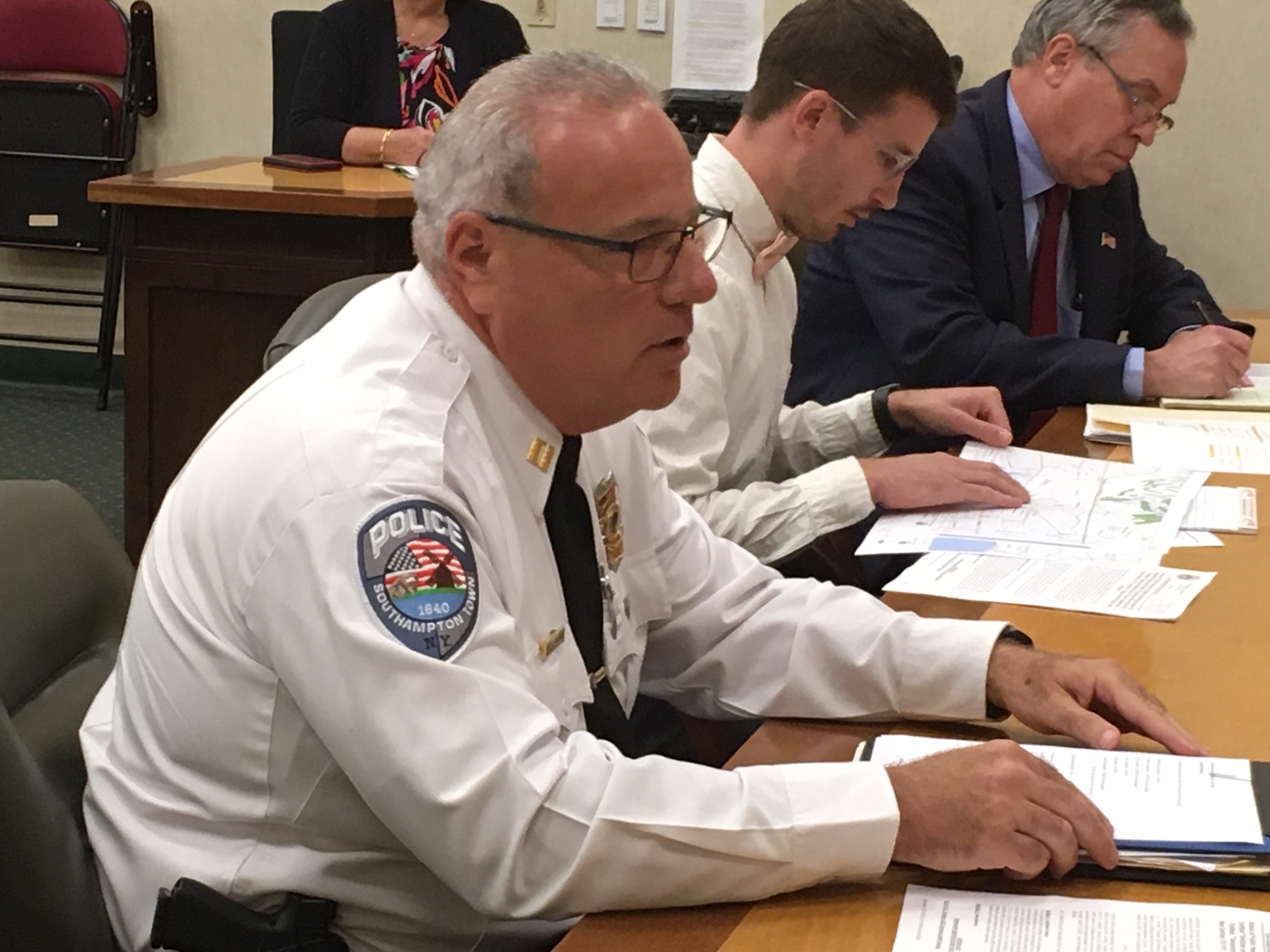
At 5:17 on a Wednesday afternoon in September, traffic is at a crawl on Montauk Highway east of downtown Hampton Bays. Yards west of Peconic Road, the posted speed limit is 45 mph. Drivers are lucky to go 10 mph on a day when the flashing lights and cones program is suspended.
It takes 17 minutes to drive from Peconic Road to the light at Canoe Place Road. That doesn’t sound awful, as commutes go.
But during off hours, the same drive only takes four minutes: It’s just 1.4 miles.
The morning ride is “every bit as horrible,” according to Southampton Town Councilwoman Cynthia McNamara. “The second those cones don’t show up, I have hate mail in my inbox.”
Last week, the blinking light and cone program at Canoe Place Road and Montauk Highway was suspended for several days, as county workers began a road improvement project in the area. They’re rehabbing curbs and sidewalks, plus creating a right turn lane at the intersection.
Initially, county officials said the cone and blinking light program would have to be suspended for three weeks because it could conflict with the work underway, Highway Superintendent Charles McArdle explained. But, he informed, “They had so many complaints, they want us to continue through construction. There’ll be an overlap, but we’ll do the best we can.”
And when the program was suspended, the morning commute was just as hellish as the snail’s pace described above. The highway superintendent reported hearing from a school teacher who told him it took her an hour and 15 minutes to get from the Canoe Place Road intersection to Southampton Village, a 7.1 mile ride that Google lists as taking 16 minutes during off-peak hours.
Relief could be in sight, somewhat distant sight, and just for morning rush hour if a pilot project slated for later this month is successful and town officials find a way to pay for it on an ongoing basis.
The pilot, which will be the subject of a public hearing on October 11, will take place later this month. On the mornings of Monday, October 24, through Friday, October 28, from 5:30 to 9:30 a.m., traffic signals at six intersections will flash yellow to allow for continued traffic flow on Montauk Highway and County Road 39 in Southampton, Hampton Bays and Water Mill. Although McArdle procured required permits for both timespans, there’s no plan to mount the pilot during the evening commute.
Intersections include: Canoe Place Road on Montauk Highway, Tuckahoe Road at its intersections with both Montauk Highway and County Road 39, Magee Street and CR 39, St. Andrews Road at Montauk Highway, and Station Road and Montauk Highway in Water Mill. While the lights are flashing yellow, left hand turns will be prohibited — east and westbound drivers can’t make them from the main thoroughfares, and drivers heading north or south will not be allowed to turn left or drive through the intersections.
A public hearing must be held to solicit community comment on the concept of adding a new article to the town code for the temporary restrictions.
Discussing the program at a September 29 Town Board work session, Southampton Town Supervisor Jay Schneiderman underscored the board’s desire to gather data before, during and after the program to see if it really shaves a substantial amount of time from a driver’s commute. Officials will also strive to determine whether it reduces the impact on residential back roads where neighbors complain of streams of through traffic barreling along roads not built to withstand the pressure.
Once determining how effective the program is, if it’s successful, lawmakers will attempt to figure out how to pay for it throughout next year’s busy season.
Because only police officers are imbued with the authority to let drivers ignore traffic signals, the program is costly. For just the five day pilot, $80,000 has been set aside to pay for police officers to sit at the intersections and monitor them.
Southampton Town Police Captain James Kiernan advised that given his manpower limitations, fulfilling their role in the pilot will be “a strain.”
“We’ll have sergeants and possibly lieutenants at the intersections,” he said. “We don’t have the staff to do it on a continuing basis.”